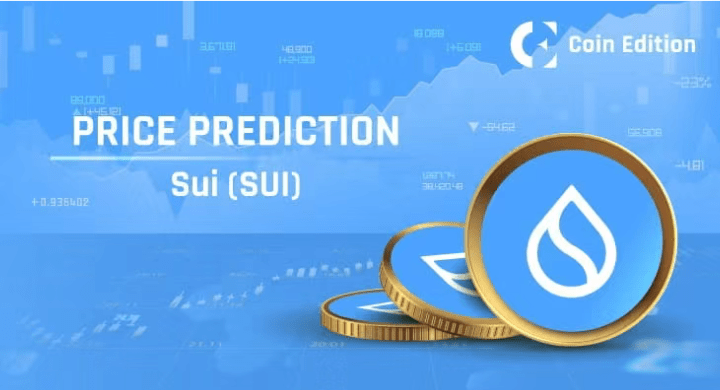In the Web3.0 industry, the development of public chains has always attracted the attention of many investors. In recent years, the on-chain market of SUI has experienced a blowout, while the once-popular old public chain Ethereum has shown a slightly weak on-chain performance in recent years, and the on-chain vitality of SOL (Solana) has also gradually weakened. The vitality of public chains is closely related to on-chain projects, which is particularly evident in the anchoring of the new currency issuance pool.
For primary market players, on-chain pools should be easy to understand. For example, taking a new currency (coin A) as an example, if it is issued on the Solana public chain, how should the initial pricing of the on-chain pool be determined?
Since new coins usually have no value when they are issued, they need corresponding anchors for the currency to generate value. If it is on the Solana public chain, how will the capital pool be anchored?
Take the decentralized fund pool as an example:
🔹1SOL = 1000A coins. Although the new coin A itself has no value, by being anchored to 1SOL, coin A has an initial price.
🔹If 1SOL is worth 140U, then 1A coin is equal to 0.14U. Through the anchoring of the on-chain funding pool, A coin has value.
The funding pools of some projects are directly anchored with USDT, but if it is a vibrant public chain issuance project, then the decentralized funding pool must be the main currency of the public chain.
For example
🔹In the initial stage, we anchor
🔹1SOL (140U) = 1000A coins, the SOL price doubles to 280U.
🔹At this time, 1SOL (280U) = 1000A coins. Even if the A coin itself has no increase, it can still enjoy the double guarantee of the main chain.
🔹At the beginning of the year, SOL soared 5 times from 30U, which means that any project on the SOL public chain can get a 5-fold guarantee. If the currency rises by 2 times again, it will get 10 times the profit! This is the close relationship between the main chain ecology and currency.
🔸At this stage, the vitality of the Ethereum chain is relatively weak, and its price is more than $2,000, making it difficult to double its growth.
🔸SOL price is hovering around $150, and it is difficult to find a breakthrough opportunity.
🔹The SUI chain has a great chance of becoming a dark horse and shining in the on-chain ecosystem.
🔹The current SUI price is 1.4U, which has great room for on-chain growth.
Recently, Sui worked with Circle to introduce native USDC to consolidate the DeFi on-chain ecosystem.
As a public chain, Sui developers have built various forms of applications including DeFi, NFT, games, DePIN and RWA.
The introduction of USDC will make the Sui chain ecosystem healthier, thereby consolidating Sui's leading position in the Monolithic high-performance public chain track.
🔷Integration with USDC will bring many benefits to Sui participants:
① Due to its full reserve and good regulation, USDC can be redeemed at any time at a 1:1 USD ratio;
② Qualified institutions can make legal deposits through channels such as Circle Mint;
③Native USDC can be easily integrated with DApps, making it more convenient for project owners and partners;
④CCTP allows users to securely transfer native USDC across 72 lines of nine public chain networks;
⑤CCTP allows developers to create DApps that facilitate interaction between MoveVM, EVM, SVM, and the Cosmos ecosystem to achieve a frictionless experience of cross-chain exchange, purchase, and fund rebalancing.

According to DefiLlama data, Sui Network TVL reached US$1.004 billion, a record high.
Among them, the TVL of the lending agreement NAVI Protocol reached 399.55 million US dollars, with a weekly increase of 15.46%;
The TVL of the lending protocol Scallop Lend reached US$213.57 million, with a weekly increase of 20.83%;
The TVL of lending platform Suilend reached US$165.88 million, with a weekly increase of 15.14%.
From these data, it can be seen that Sui has been in a stage of rapid development recently and may soon become a strong competitor of Solana.
Sui’s performance relative to Solana, combined with its architecture and upcoming gaming console release, could make it a top contender in the “alternative L1” space.
🔹It has been 7 years since I entered the Web3.0 market in 2017, and I have a deep understanding of the relationship between the public chain ecosystem and projects.
🔹From 2017 to 2021, Ethereum ushered in the carnival of the Web3.0 industry with nearly 20 times the on-chain revenue. As mentioned at the beginning of the article, the relationship between the on-chain fund pool and the main chain, driven by this, the market from 2017 to 2022 gave birth to countless 100-fold coins.
🔹From 2021 to 2024, SOL (Solana)'s nearly 10-fold on-chain revenue has pushed the Solana ecosystem currency to a peak of 10 times and 20 times.
🔹However, after 2024, Ethereum and SOL will obviously no longer be able to grow exponentially to feed back the explosion of the chain ecology. Among the new generation of public chains, Sui has great advantages and is expected to become the dark horse of the industry. #sui链 $SUI



